Review of Nosferatu The Vampyre
Introduction
Broadly speaking, there are two types of vampire in popular culture. There is the Christopher Lee style that is broadly human with elongated canines (and we`ll include instances such as the Lost Boys and Buffy`s vamps). Then there is the rodent style with two pointed teeth at the front. This style was introduced by FW Murnau in his 1922 classic Nosferatu and has rarely been resurrected since.
Despite sharing the name, Werner Herzog`s vampire tale is closer to Bram Stoker`s original story than Murnau`s film. The characters names are as written by Stoker (thus we have Dracula and not Orlock) and the plot follows that written by Stoker much more tightly. The main point of similarity between the two Nosferatus is in the appearance of the vampire. Herzog`s Count is played by Klaus Kinski in a similar vein to Max Schreck, including the rat like appearance.
The general plot should be familiar to most. Jonathan Harker (Bruno Ganz) journeys to a remote mountain castle in Carpathian Mountains to sell a house to the reclusive Count Dracula (Klaus Kinski). Harker soon comes to realize that the Count is no living man, but instead an undead vampire. Dracula makes his way to Harker`s home town, planning to sow evil and pestilence, pursued by a Harker who may no longer be the man he once was. Harker`s wife Lucy (Isabelle Adjani) realizes what is happening to her husband and her town and tries to put a stop to the Count`s plans.
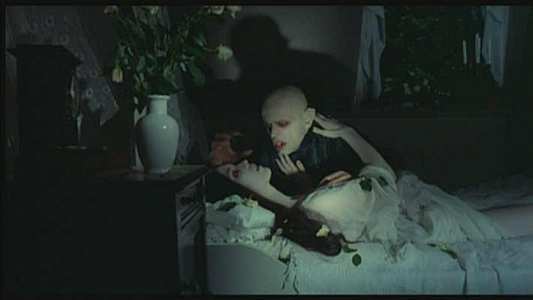
Video
The Anamorphic 1.78:1 widescreen image is more than acceptable. While some grain is visible (especially on what looks like stock footage of bats), it isn`t obtrusive and doesn`t detract from this visual feast. The image is detailed, if occasionally a little soft, and colours are appropriately muted.
On a miniscule budget for the time ($750,000), director Herzog created a vivid portrayal of Dracula`s castle and the world that the protagonists inhabit. The Carpathian Mountains are beautifully represented, with the imagery becoming more ominous as Harker nears the Count`s home. The buildings and canals of Delft are used to great effect to create an initially idyllic and subsequently haunted home for Harker.
The most effective imagery, however, is that which features the Count himself. Klaus Kinski plays Dracula with a melancholy intensity and every scene he is in is a visual tour de force - he moves with an angular awkwardness and occasional darts, casting menacing shadows. Some of the most striking scenes pay homage to similar scenes in Murnau`s film but are no less effective for that. The use of light in the denouement is striking.

Audio
With the exception of the score, the audio is much less effective than the visuals. The English version has a DD 2.0 soundtrack (which appears to be a mono track duplicated on both front speakers) and this is adequate - speech is clear but there are few effects to add to the atmosphere. The German version comes with a DD 5.1 soundtrack and, while this adds some ambience, there is no use made of the rears or LFE. Again, the soundtrack itself does little for the atmosphere.
Where the audio really scores is in the use of music. In his commentary Herzog suggests that he is one of the few directors who know how to use music in their films. While this is perhaps overstating things, there is little doubt that Herzog knows a creepy piece of music when he hears it. Throughout the film, mood is greatly enhanced by judicious use of music. Particularly striking is the Eastern European choral piece used during the town`s descent into madness. The piece has both a pastoral innocence and a profound sense of unease (reminiscent of the mood created by Kate Bush in her Ninth Wave suite on the Hounds of Love album).
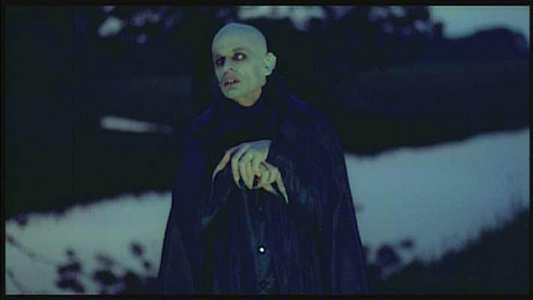
Features
Aside from various trailers, there are only two features of note: a contemporary documentary and a commentary with Herzog and interviewer Norman Hill. I didn`t enjoy the documentary, finding it dull and dated.
The commentary is another matter entirely. Herzog is informative and witty, although typically immodest. Nosferatu fans will find it fascinating and it has much to recommend it to more casual viewers. The sections where Herzog comments on his relationship with the notoriously difficult Kinski are particularly compulsive. He is careful not to criticise Kinski directly but he is happy to quote his cast and crew - the part where the crew refer to Kinski as a "pestilence" is priceless.
Note that the extras are only available on the German language disk - not the English. Also, the commentary track is mixed at a much lover volume than the main track and this makes switching between main soundtrack and commentary inconvenient.
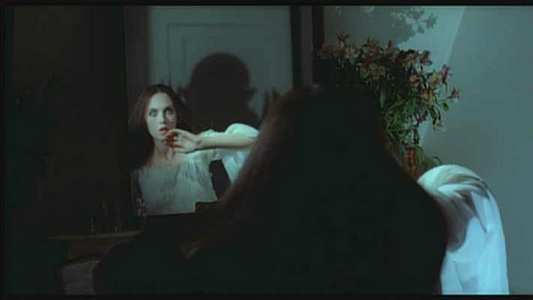
Conclusion
At the time Nosferatu was made, Herzog was already a critical darling on both sides of the Atlantic. However, Nosferatu was the first film he made with an American audience in mind. That is not to say that he made any allowances for Hollywood but he knew that the film would be strongly marketed in America. Two versions were made - one in German and one in English. Both versions are present in this DVD package on separate disks.
Despite being targeted at a wider audience than he was accustomed to, Herzog (perhaps perversely) chose a completely European cast - Kinski, Ganz and Adjani. Of these three, only Kinski might have been have been recognizable to American viewers. While Kinski is superb as the world weary undead, Ganz and Adjani ruin the film for me. OK, this is horror fiction, but I found their performances stagey and unbelievable. They are stilted and their delivery of the dialogue too mannered. This may have been intentional on Herzog`s part to add to the atmosphere of dreamlike unreality, but doesn`t work for me.
Setting aside, the weak points of performance and (to some extent) dialogue, Nosferatu is an atmospheric triumph. Rarely has a mood of slow menace been sustained so comprehensively over 100 minutes. Note, however, that this is a particularly bloodless vampire film - you only see one small drop of blood. The horror generated is one of unease and disquiet, and not the goriest excess.
If you like Art with your vampires, Herzog`s Nosferatu is one of your best options and this DVD is the best way to enjoy it.
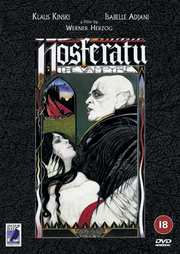

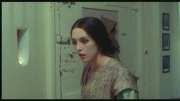


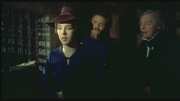
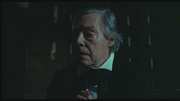
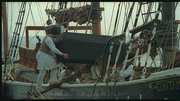
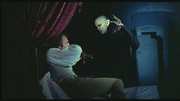
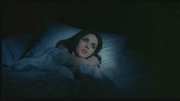
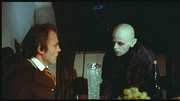
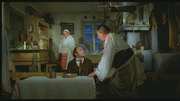

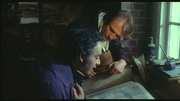
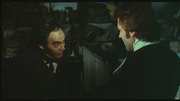
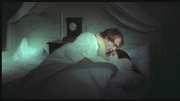
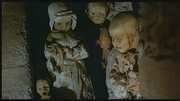
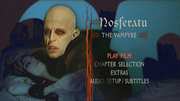
































Your Opinions and Comments
Be the first to post a comment!